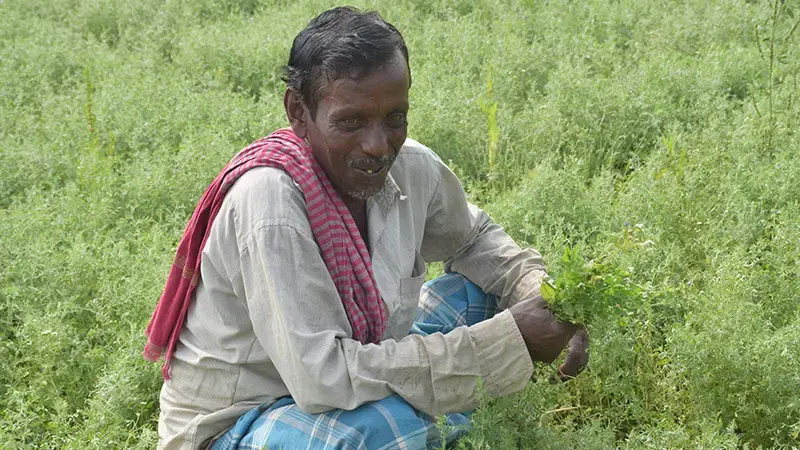A leap forward for South Asia in lentil production

Rice farmers in the villages of West Bengal and Bangladesh are opening a new path for South Asian countries to reduce their dependence on foreign lentils – South Asians are the largest consumers of lentils in the world. These farmers are growing lentils in their fields left fallow after rice harvests with the help of an agricultural research and training project. A team of ICARDA scientists took a delegation from India, Nepal, Afghanistan, Bangladesh and Bhutan on a first-of-its-kind traveling workshop through villages, from Dhaka to Kolkata where the practice is quietly taking roots. As the 10-day journey concluded this week, the delegation saw first-hand signs of what could be a leap forward in agricultural productivity, and food and nutritional security in this part of the world.
“In West Bengal alone, five to six districts, especially, have high potential for this approach to lentil production and can substantially save foreign exchange spent on lentil imports,” noted Purnendu Basu, Minister of Agriculture for West Bengal, the main rice growing state in India, in discussions with the delegation. Even though India is the largest producer of lentils in the world, it relies heavily on imports and bought 53% of its needs in 2013.
“A key scientific enabler has been that these lentil varieties are bred to have a shorter growing season so they can be suitably accommodated between two rice growing seasons,” says Dr. Shiv Kumar Agrawal, lead legume breeder at ICARDA – a work funded under OCP Foundation, the Indian Council of Agricultural Research, and CGIAR’s Grain Legumes Research Program. Other success factors in establishing a thriving rice-lentil system are new higher-yielding varieties of lentils that are tolerant to Stemphylium and resistant to common diseases such as rust and fusarium wilt. Extensive training is also being provided to rice farmers, equipping them with the skills and knowledge to manage lentil crops effectively.
The approach has already proven its potential in Bangladesh and Nepal. Lentil cropping has spread to more than 85 percent of rice fallows in the country, bringing in an additional annual income of US $26.6 million. For small-scale farmers, obtaining a harvest of lentils from the same piece of land has not only improved their livelihood but also nutrition for their families.
“In the South Asia region, there is a about 11.5 million hectares of rice fields left fallow, sometimes even up to six months every year”, says Dr. Ashutosh Sarker, the South Asia Regional Program coordinator of ICARDA. To accelerate the trend, ICARDA has launched a new pulses research platform in Madhya Pradesh. The hub will be supporting and strengthening the region’s capacity for pulse production, in partnership with the Indian Council of Agricultural Research and state partners.
Legumes research is an important strategy for sustainably intensifying production in drylands - a key objective of the CGIAR Research Program on Dryland Systems, led by ICARDA.
Images from the legumes travelling workshop can be viewed here.
